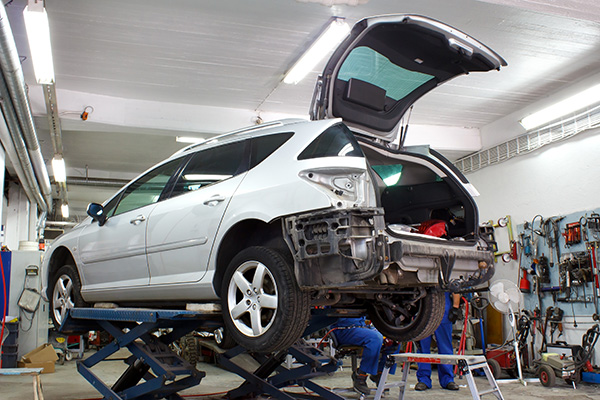
Accidents happen. Whether it's a minor fender bender or a major collision, the aftermath often leaves your vehicle looking worse for wear. But have you ever wondered how collision centers work to restore your car to its former glory? The process is more intricate than you might think, involving a combination of advanced technology, skilled technicians, and meticulous attention to detail.
The Initial Assessment
The first step in fixing car damage from an accident is a thorough assessment. When you bring your vehicle to a collision center, the technicians will perform a detailed inspection to identify both visible and hidden damages. This involves checking the exterior for dents, scratches, and structural issues, as well as inspecting the interior and undercarriage for any mechanical problems. The goal is to create a comprehensive repair plan that addresses all aspects of the damage.
Disassembly and Parts Ordering
Once the assessment is complete, the next step is disassembly. This phase involves removing damaged parts to gain access to the underlying structure of the vehicle. By doing this, technicians can identify any additional issues that were not visible during the initial inspection. Simultaneously, the collision center will order any necessary replacement parts. It's crucial to use high-quality aftermarket or OEM (Original Equipment Manufacturer) parts to ensure the best fit and performance.
Structural Repairs
Accidents often result in damage to the vehicle's frame or structure. Modern collision centers use sophisticated equipment like frame machines and laser measuring systems to restore the frame to its original specifications. This step is critical because even minor misalignments can affect the vehicle's handling, safety, and overall performance. The technicians will meticulously measure and adjust the frame, ensuring it meets the manufacturer's specifications.
Body Repairs
With the structural repairs complete, the focus shifts to the body of the car. This phase involves repairing or replacing panels, fixing dents, and addressing any cosmetic issues. Technicians use a variety of tools and techniques to ensure a seamless repair. Once the bodywork is finished, the vehicle moves to the paint department. Here, the repaired areas are primed, painted, and clear-coated to match the rest of the vehicle. Modern paint-matching technology ensures a flawless finish that blends perfectly with the original paint job.
Putting It All Together
After the body and paint repairs are complete, it's time to reassemble the vehicle. Technicians will reinstall any parts that were removed, including trim, lights, and other components. During this phase, the collision center conducts a series of quality control checks to ensure that all repairs meet industry standards and the vehicle is safe to drive. These checks include everything from alignment and paint quality to ensuring that all systems are functioning correctly.
Final Inspection and Detailing
The last step in the repair process is a final inspection and detailing. Our technicians thoroughly clean the vehicle, both inside and out, to ensure it looks as good as new. They will perform a final inspection to verify that all repairs have been completed to the highest standard. This step is crucial for ensuring customer satisfaction and safety.
Need expert collision repair? Trust the professionals at Fuller Automotive to restore your vehicle to its former glory. Our skilled technicians use advanced technology to ensure top-quality repairs.